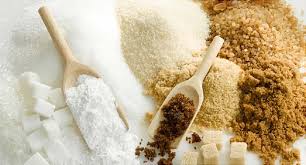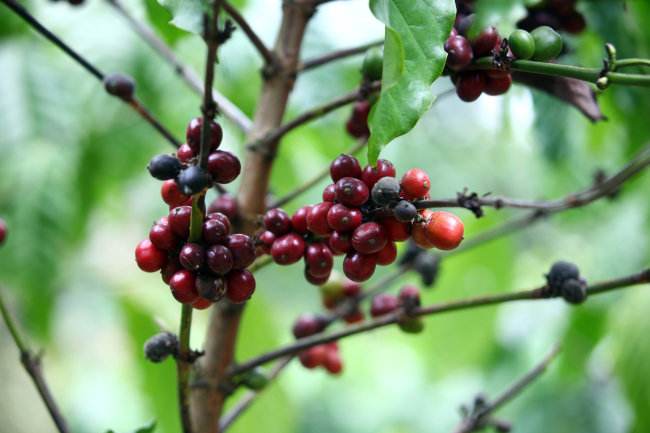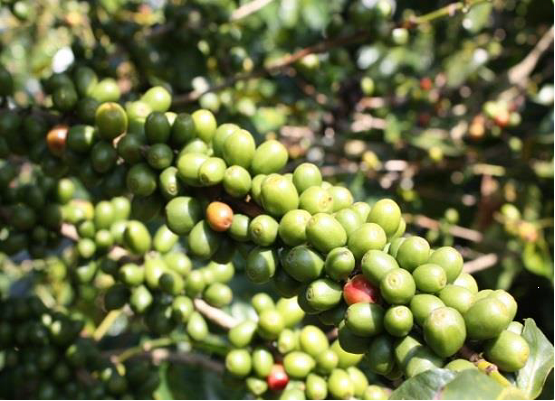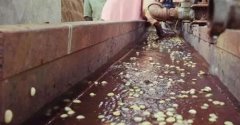Ethiopia Idido Misty Valley Fog Valley details coffee flavor description
For professional baristas, please follow the coffee workshop (Wechat official account qianjiecoffee)

Ethiopia is the country where coffee was first discovered, and it is still the most important producing country and the best in terms of coffee quality and output. Coffee is mostly traditional Arabica species, with an annual output of about 350000 tons and more than 70% of which are exported to countries around the world. About 15 million people in the country are engaged in coffee-related industries, and more than 90% of the farms or cooperatives are planted in small areas. Crops produced in Ethiopia after 2008, including wheat, corn, sesame and coffee, were fully imported into the ECX trading system (Ethiopian Commodity Exchange) to replace the existing auction and export methods, by coffee farmers or cooperatives to send coffee to ECX centralized warehouses, beans of the same grade and producing areas will be mixed together and auctioned directly. You will not know which farmers or which cooperatives or producing areas produce it. In fact, this practice has no effect on output and quality. It is easier to tell the quality of coffee by price. What is affected is that intermediate traders cannot freely track and obtain satisfactory profits. [low price and high quality] make consumers more transparent, because they will be taxed heavily if they do not pass the ECX trading system. Now more than 90% are through this trading system, but for buyers of boutique coffee, the ECX trading system is not a good thing. For this reason, Ethiopia launched the DST (Direct Specialty Trade) system in 2010. The DST system is an irregular Ethiopian auction. Only through the SCAA cup test standard of more than 80 points of fine coffee specialty coffee can you hang up the name of your farm or cooperative and trade with foreign raw bean merchants.
Washing beans in Ethiopia will be distinguished by adding 1 and 2 after the name (with a higher quality of 1). The pulp is removed immediately after the coffee cherry is harvested, and then the coffee bean is fermented in water to remove the pectin layer. this process takes several hours, and the number of hours depends on the type of coffee, producing area and temperature. This process must be closely understood that if there is a slight mistake, the coffee bean will have a poor flavor, and after fermentation is completed. The coffee beans will be washed through a long sink with a high and low drop, and any defective beans and foreign bodies will also be removed during the process. after that, the coffee beans will be dried on the drying bed, and it is also necessary to pay close attention to turning them every few hours to ensure the integrity of the drying process. This is the whole process of washing beans.

Operation Cherrie Red's "Red Cherry Initiative" (ORC) is a project to improve the quality of small-scale farms, mainly to encourage soybean farmers and surprise roasters. Trabocca, the largest coffee bean manufacturer in the Netherlands, invited all Ethiopian farms to produce small batches of beans of about 1500-3000 kg (25-50 bags) before the harvest season. Women can only choose 100% ripe red cherries, which varies greatly in flavor. So Ethiopian women who are careful and willing to work hard are important drivers of the Red Cherry project.
Action Red Cherry is also a reinforcing method, which makes the farm pay more attention to the process of selecting beans. The prices of these coffees are also relatively high. Red Cherry Action has water washing, sun-drying beans, half-washing, half-sun, experimental coffee and so on. The main producing areas are Yegashifi, Sidamo, Penga Forest, Lekanti, Ken Bata, Iruba, Hara, Lim, joining Coroja Golocha in 2011 (near Hara), etc. These are unique flavors and can fully show the flavor of Ethiopian beans. Trabocca will choose from the coffee after receiving it. Farms that have passed the cup test quality test in Ethiopia and the Netherlands will pay a high bonus. The cup test pass score must be more than 88 points in order to become a good coffee for the Red Cherry Project. Trabocca, the promoter of the Red Cherry project, invested all the profits earned in the past few years in the cooperative farm. Trabocca stressed that this was an unprofitable project, so the company only used four people, including the boss and secretary, to carry out the Red Cherry project, and other administrative related matters were supported by the parent company to reduce administrative expenses, and all the profits were returned to the cooperative farm.

Yirgacheffe Yega Xuefei is in the indigenous language "Let's settle down in this wetland." he is located in the northwest highlands of Sidamo province. Because of the large number of special representative farms and very representative, he is independent by coffee lovers. However, the quality of sun-dried beans could not keep up until Idido Misty Valley Natural gave the world a new understanding of Ethiopia's traditional sun-drying flavor. The Misty Valley text will show that this is an area surrounded by clouds, and the scenery is extremely beautiful. Misty Valley Sun Bean is the best Yega Sun Bean I have ever drunk. In recent years, it has been purchased by American bean merchants until 2012, and it is worth looking forward to.
Property Characteristics: farm characteristics
Region producing area: Idido Misty Valley misty valley
Country countries: Ethiopia Ethiopia
Grade level: G3
Altitude: over 1800-2200 meters
Harvest period harvest time: September of each year to January of the following year
Certification certification: all coffee without certification is non-toxic and organic.
Soil Type soil properties: P H5.2-6.2red brown laterite
Coffee Characteristics: coffee characteristics
Variety variety: heirloom cultivars traditional native species of Yega
Processing System treatment: Dry-Processed sun exposure
Appearance appearance: Longberry rice-shaped 16-18 mesh
Important Notice :
前街咖啡 FrontStreet Coffee has moved to new addredd:
FrontStreet Coffee Address: 315,Donghua East Road,GuangZhou
Tel:020 38364473
- Prev

Yejia Xuefei addis ketema Adis Water washed beans description of Yega Flavor
Professional barista exchanges please follow the coffee workshop (Wechat official account qianjiecoffee) Ethiopia is the country where coffee was first discovered, in terms of coffee quality and output, Ethiopia is still the most important producing country and the best, coffee is mostly the traditional Arabica species, the annual output is about 350000 tons and more than 70% are exported to countries around the world, about 15 million people in the country are engaged in coffee
- Next

The most expensive Guatemalan coffee, a cup of bidding coffee at Incht Manor, Guatemala, which costs less than a thousand yuan.
For the exchange of professional baristas, please pay attention to the coffee workshop (Wechat official account cafe_style) to see the amazing potential of domestic boutique coffee. With their own baked beans, hand-made and table service, Zhanlu coffee has been produced all day in the industry. At the beginning of the year, with the pursuit of extremely high-quality products, four extremely fine series have been launched to capture the female guests of top customers and afternoon tea, with an average price of 10,000 yuan per kilogram. Take the lead
Related
- Detailed explanation of Jadeite planting Land in Panamanian Jadeite Manor introduction to the grading system of Jadeite competitive bidding, Red bid, Green bid and Rose Summer
- Story of Coffee planting in Brenka region of Costa Rica Stonehenge Manor anaerobic heavy honey treatment of flavor mouth
- What's on the barrel of Blue Mountain Coffee beans?
- Can American coffee also pull flowers? How to use hot American style to pull out a good-looking pattern?
- Can you make a cold extract with coffee beans? What is the right proportion for cold-extracted coffee formula?
- Indonesian PWN Gold Mandrine Coffee Origin Features Flavor How to Chong? Mandolin coffee is American.
- A brief introduction to the flavor characteristics of Brazilian yellow bourbon coffee beans
- What is the effect of different water quality on the flavor of cold-extracted coffee? What kind of water is best for brewing coffee?
- Why do you think of Rose Summer whenever you mention Panamanian coffee?
- Introduction to the characteristics of authentic blue mountain coffee bean producing areas? What is the CIB Coffee Authority in Jamaica?

